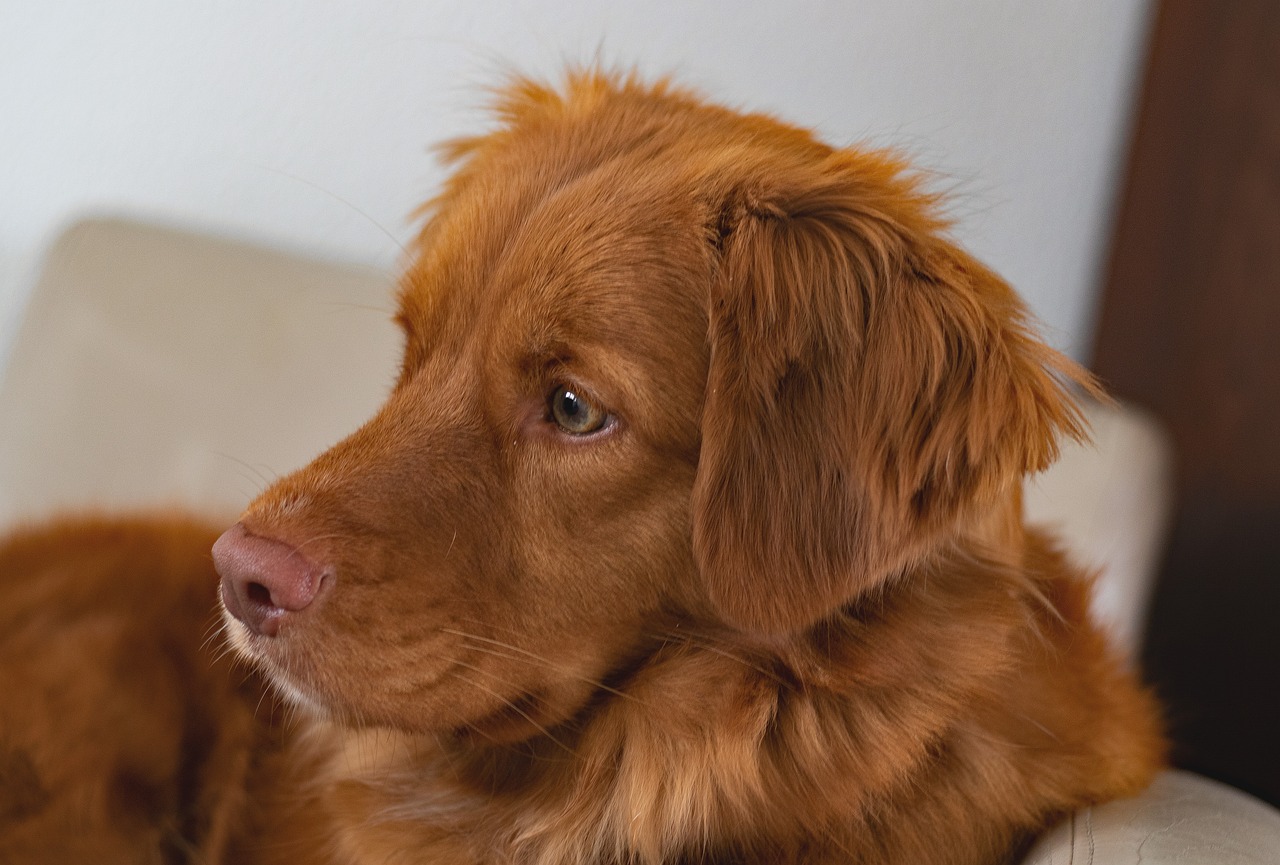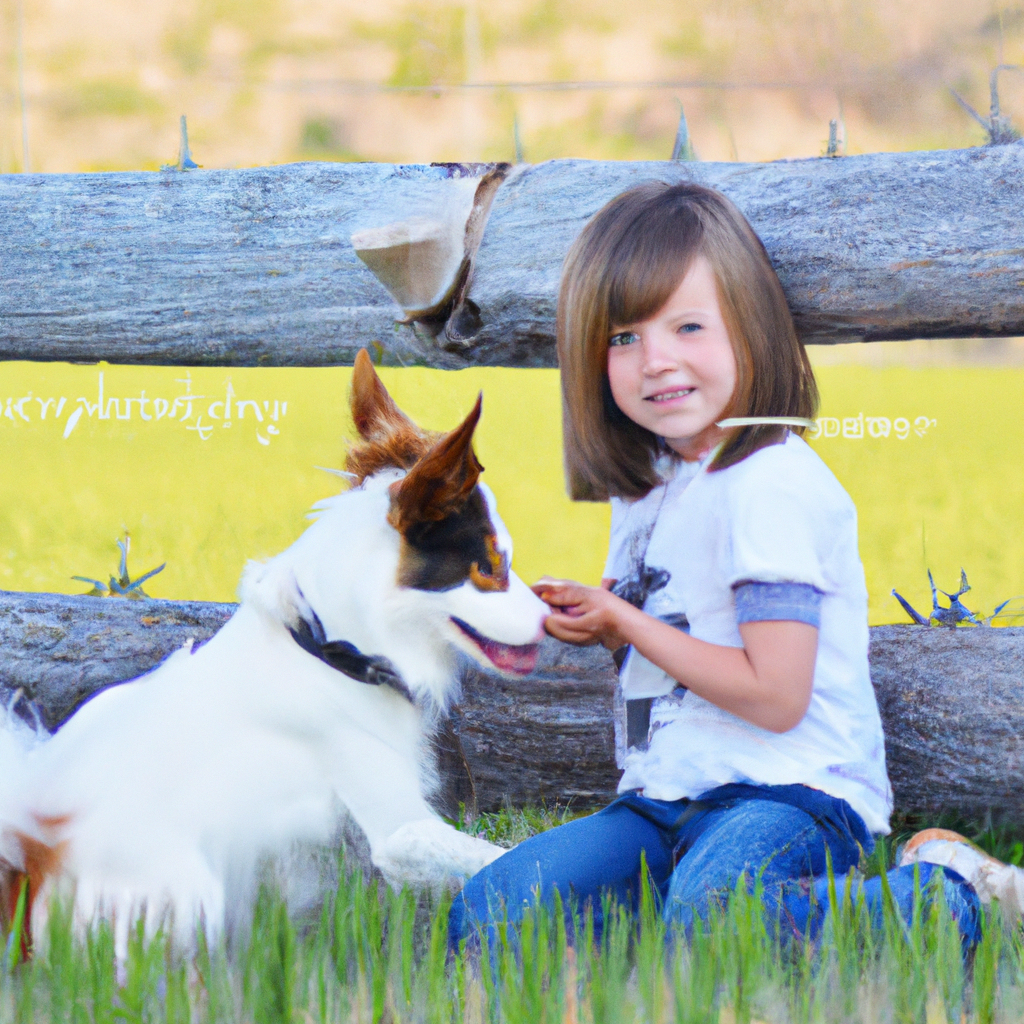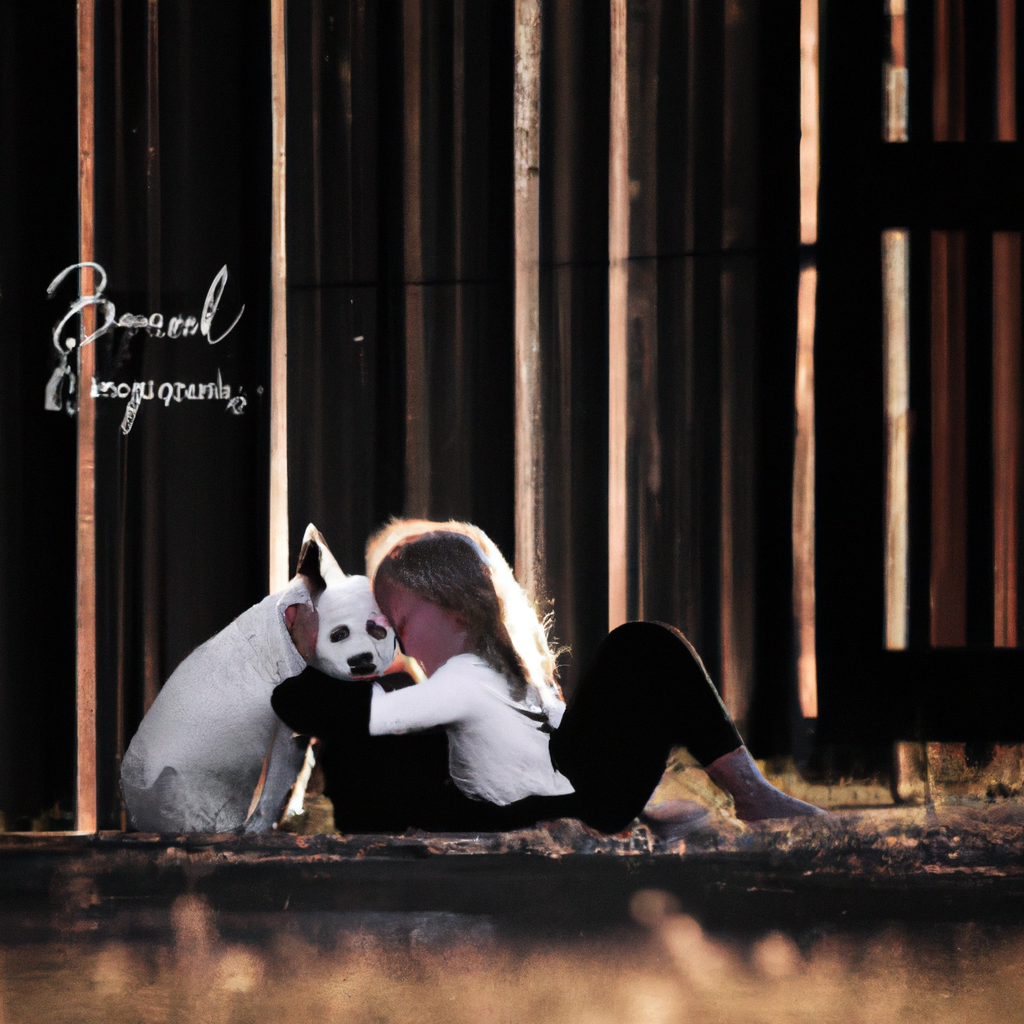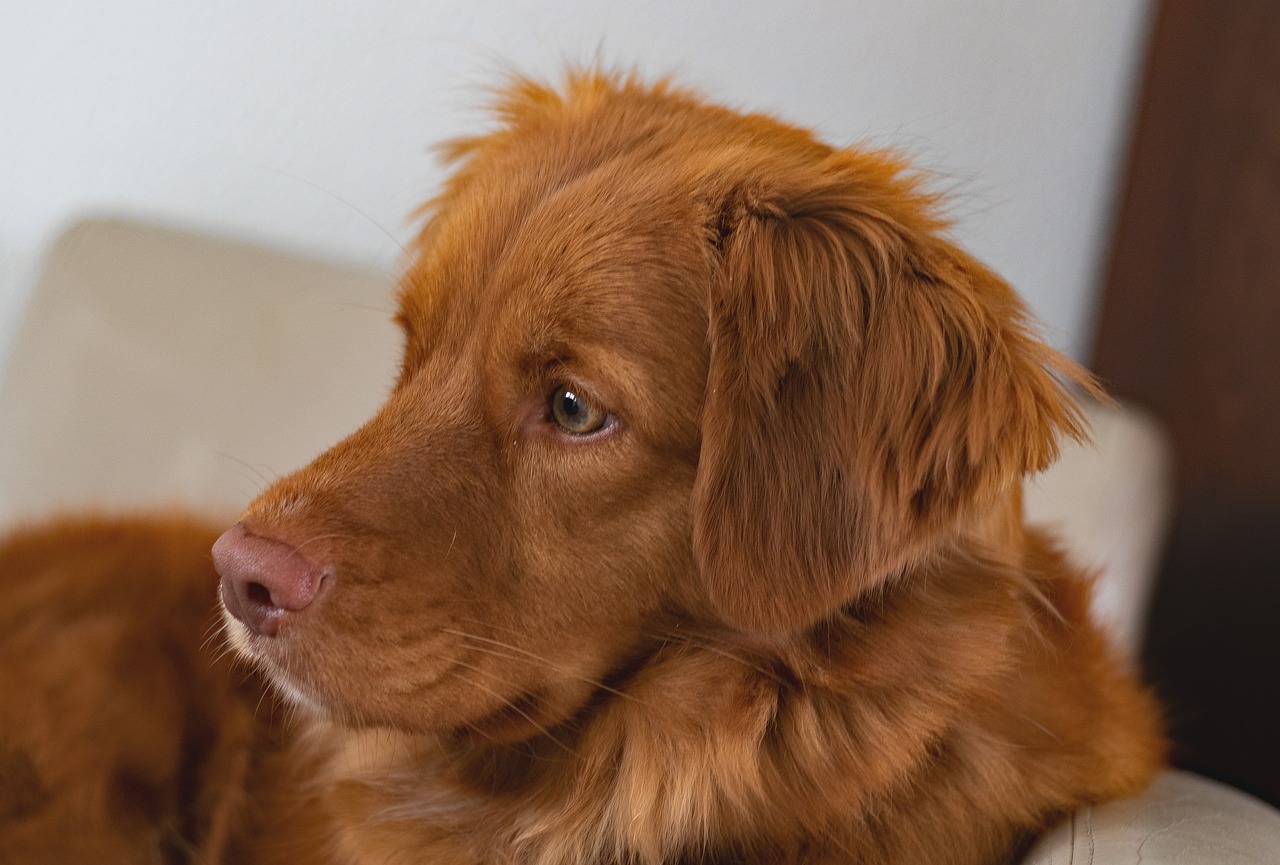So, you’ve brought home a new furry friend – a Border Collie – and now you’re wondering how to ensure a strong bond between your children and this intelligent and energetic breed. Building a positive relationship between children and Border Collies requires a combination of patience, consistency, and understanding. In this article, we will explore some practical tips and strategies to help you foster a strong bond between your children and your Border Collie, creating a rewarding and enduring friendship for years to come.
Understanding the Border Collie Breed
Physical characteristics
The Border Collie is a medium-sized breed with a well-balanced and athletic physique. Their coat is typically thick and comes in a variety of colors including black and white, red and white, and tricolor. Border Collies have a distinctive expression, with intelligent eyes that exude alertness and energy. Their ears are medium-sized and set high on the head, adding to their attentive appearance. Overall, the Border Collie is a graceful and agile breed, perfectly suited for their role as a working and herding dog.
Temperament
Border Collies are known for their intelligence, energy, and strong herding instincts. They are highly trainable and eager to please, making them excellent companions for active families. However, their high energy levels require regular exercise and mental stimulation to prevent them from becoming bored or destructive. Border Collies are also known to be sensitive dogs, and they thrive in an environment where they feel loved, supported, and challenged. With proper socialization and training, Border Collies can be fantastic family pets.
Exercise and mental stimulation needs
Border Collies have an intense need for physical exercise and mental stimulation. Due to their high energy levels and herding instincts, they require ample opportunities to run, play, and engage in activities that stimulate their mind. Daily walks, runs, or hikes are essential for meeting their exercise needs. In addition to physical exercise, Border Collies benefit from activities that challenge their intellect, such as puzzle toys, obedience training, or agility courses. Providing them with outlets for their energy and mental stimulation will help ensure a happy and well-behaved Border Collie.
Preparing Your Home for a Border Collie
Creating a safe environment
Before bringing a Border Collie into your home, it is important to create a safe environment for them. This includes securing any potential escape routes, such as installing a sturdy fence around your property. Border Collies are known for their agility and jumping abilities, so ensuring the fence is tall enough to prevent them from escaping is crucial. Additionally, survey your home for any potential hazards, such as toxic plants, cleaning supplies, or small items that could be chewed or swallowed. By removing or securing these hazards, you can prevent accidents and keep your Border Collie safe.
Eliminating potential hazards
In addition to creating a safe environment, it is important to eliminate any potential hazards that may pose a risk to your Border Collie. This includes securing loose electrical cords, storing toxic substances out of reach, and keeping household cleaners and medications locked away. Border Collies are curious dogs and may explore their environment by chewing or ingesting items that could be harmful to their health. Taking these precautionary measures will help ensure the safety and well-being of your Border Collie.
Providing a designated space for the dog
Border Collies thrive when they have a designated space they can call their own. This can be a crate or a specific area in your home where they can retreat to rest and relax. Providing a comfortable bed or blanket and some favorite toys in this space will make it even more inviting for your Border Collie. Having their own space not only gives them a sense of security but also provides a place where they can unwind and recharge, especially after an active day.
Introducing toys and interactive games
To keep your Border Collie entertained and mentally stimulated, it is essential to provide them with plenty of toys and interactive games. Border Collies are highly intelligent dogs and enjoy tasks that challenge their problem-solving abilities. Puzzle toys, treat-dispensing toys, and interactive games that involve hiding treats can help keep their minds engaged. Offering a variety of toys that cater to different needs, such as chew toys for teething or durable toys for heavy chewers, will keep them entertained and prevent them from turning their attention to destructive behaviors.

Introducing Your Border Collie to Children
Supervised introduction
When introducing your Border Collie to children, it is crucial to provide a supervised and controlled environment. This ensures the safety of both the dog and the child. Begin by introducing them in a calm and quiet area, allowing them to become familiar with each other’s presence without any direct physical contact. Gradually, under close supervision, encourage gentle interactions between the Border Collie and the child, always monitoring their behavior and body language for signs of discomfort or fear.
Teaching children how to approach and interact
It is important to teach children how to approach and interact with a Border Collie in a respectful and appropriate manner. Teach them to approach the dog calmly, without sudden movements or loud noises. Encourage them to let the Border Collie sniff their hand before attempting any physical contact. Teach children to avoid pulling on the dog’s ears or tail, and to refrain from bothering the dog while it is eating or resting. By teaching children to respect the boundaries of the Border Collie, you can help create a positive and safe interaction between them.
Establishing boundaries and rules
To ensure a harmonious relationship between your Border Collie and children, it is crucial to establish clear boundaries and rules. Teach children to respect the dog’s personal space and not to invade it. Establish areas where the dog is not permitted, such as bedrooms or certain furniture. Additionally, teach children not to disturb the dog while it is sleeping or eating. By setting these boundaries and rules, you can create a safe and respectful environment for both the Border Collie and the children.
Encouraging gentle touch and respectful behavior
Gentle touch and respectful behavior are key when interacting with a Border Collie. Teach children to stroke the dog gently and avoid rough play or pulling on the dog’s fur. Encourage them to speak softly and calmly around the dog, as loud noises can startle or stress them. By modeling and reinforcing gentle touch and respectful behavior, you can help foster a positive and trusting relationship between your Border Collie and the children.
Positive Reinforcement Training
Using reward-based techniques
Positive reinforcement training is highly effective and recommended for training Border Collies. This training method involves rewarding desired behaviors with treats, praise, or play, while ignoring or redirecting undesired behaviors. Border Collies are intelligent and eager to please, and they respond well to positive reinforcement. By focusing on rewarding their efforts and successes, you can build a strong bond with your Border Collie and motivate them to continue learning.
Teaching basic commands
Basic commands are essential for the safety and obedience of your Border Collie. Teach commands such as “sit,” “stay,” “come,” and “leave it” using positive reinforcement techniques. Start with simple commands in a quiet and distraction-free environment, gradually increasing the level of difficulty as your Border Collie becomes more skilled. Consistency and repetition are key to effective training, so practice these commands regularly and reward your Border Collie for their successful responses.
Incorporating children in training sessions
Involving children in training sessions can be beneficial for both the Border Collie and the children. It provides an opportunity for them to bond and develop a mutual understanding. Assign age-appropriate tasks to children, such as holding treats for rewards or practicing basic commands. Supervise these training sessions closely and ensure that interactions between the Border Collie and the children remain positive and safe. By involving children in training, you can help them develop a sense of responsibility and strengthen the bond between them and the Border Collie.
Consistency and patience
Consistency and patience are crucial when training your Border Collie. These dogs are quick learners, but they thrive when they receive clear and consistent instructions. Establish a routine for training sessions and stick to it. Reinforce desired behaviors consistently and avoid punishment or harsh corrections. Positive reinforcement training takes time and patience, so be prepared to dedicate regular training sessions to help your Border Collie develop their skills and strengthen the bond with your family.

Socializing Your Border Collie and Children
Organizing playdates with other kids and dogs
Socialization plays a vital role in the development of a well-rounded Border Collie. Organize playdates with other children and friendly, well-behaved dogs to expose your Border Collie to different people and animals. Supervise these interactions closely, ensuring that all participants are comfortable and enjoying the experience. These playdates provide an opportunity for your Border Collie to learn appropriate social behavior and develop positive relationships, both with children and other dogs.
Attending dog training classes together
Dog training classes can be a valuable experience for both your Border Collie and your children. Enroll in a reputable dog training class that emphasizes positive reinforcement techniques and incorporates socialization exercises. These classes provide a structured environment where your Border Collie can learn obedience skills and practice good behavior around other dogs and people. Attending these classes together as a family not only strengthens the bond between your Border Collie and your children but also ensures consistency in training approaches.
Exposing your collie to various environments
To ensure that your Border Collie is comfortable and well-adjusted in different environments, expose them to a variety of settings. Take them on walks in different neighborhoods, bring them to dog-friendly parks, and visit friends or family who have well-behaved pets. These experiences allow your Border Collie to become familiar with different sights, sounds, and smells, helping them to develop confidence and adaptability. Always supervise these outings and provide positive reinforcement for good behavior.
Teaching appropriate social behavior
Teaching your Border Collie appropriate social behavior is essential for their well-being and the safety of others. Encourage them to approach other dogs and people calmly and gradually. Teach them to greet others politely without jumping or excessive excitement. Reward calm and polite behavior during social interactions and redirect any undesirable behaviors. By consistently reinforcing appropriate social behavior, your Border Collie will learn how to navigate social situations confidently and peacefully.
Building Trust and Bonding Activities
Regular grooming and physical contact
Regular grooming sessions not only contribute to the well-being and appearance of your Border Collie but also provide an opportunity for bonding. Brushing their coat, cleaning their ears, and trimming their nails can be done in a calm and gentle manner, reinforcing a sense of trust and security. Additionally, physical contact, such as petting and cuddling, helps to strengthen the bond between your Border Collie and your family. These positive interactions build trust and create a loving relationship based on care and affection.
Engaging in interactive play
Interactive play is a great way to bond with your Border Collie and provide them with mental and physical stimulation. Engage in games that appeal to their herding instincts, such as playing fetch or teaching them to chase and catch frisbees or balls. Puzzle toys that require problem-solving skills can also be incorporated into playtime. By participating in interactive play, you not only strengthen the bond between your Border Collie and your family but also provide an outlet for their energy and intelligence.
Participating in training exercises as a family
Training exercises are not only important for teaching your Border Collie obedience but also for strengthening the bond within your family. Involve every family member in training sessions by assigning different tasks and commands. This allows your Border Collie to bond with each family member and reinforces the notion that training is a fun and positive activity. Working together as a family creates a cooperative and supportive environment, reinforcing the bond between your Border Collie and the children.
Going on adventures and outdoor activities
Border Collies thrive when they are given opportunities to explore and experience the outdoors. Take your Border Collie on adventures such as hiking, camping, or beach trips. These shared experiences create lasting memories and strengthen the bond between your Border Collie and your family. Engage in activities that cater to their high energy levels, such as playing in the backyard, going on long walks, or even participating in dog sports such as agility or flyball. By providing these outdoor activities, you not only bond with your Border Collie but also meet their exercise and mental stimulation needs.

Understanding Your Child’s Role and Responsibilities
Age-appropriate tasks and chores
Assigning age-appropriate tasks and chores to your children can help teach responsibility and create a sense of involvement in the care of your Border Collie. Younger children can assist with tasks such as filling water bowls or picking up toys, while older children can take on more responsibilities like feeding or grooming under supervision. By involving children in these tasks, you not only lighten the workload but also instill a sense of ownership and responsibility towards the care of the Border Collie.
Feeding and watering the collie under supervision
Feeding and watering your Border Collie should be done under adult supervision, especially when children are involved. Teach children to follow a feeding schedule and measure the proper amount of food to prevent overfeeding. Supervise the children while they handle and dispense food, ensuring that they follow proper hygiene practices. By involving children in feeding and watering routines, you teach them about the importance of responsible pet care and develop their understanding of the dog’s needs.
Assisting with grooming and cleaning
Grooming and cleaning tasks, such as brushing the dog’s coat or cleaning their living area, can be shared responsibilities between children and adults. Teach children to groom the Border Collie gently and patiently, ensuring the dog feels safe and comfortable during the process. Supervise these grooming sessions closely, providing guidance and assistance as needed. Assigning these tasks to children not only promotes their sense of responsibility but also reinforces the bond between them and the Border Collie.
Participating in training sessions
Encourage children to participate in training sessions with the Border Collie. Assign them age-appropriate tasks, such as holding treats for rewards or practicing basic commands. Supervise these sessions closely, ensuring that both the dog and the child are safe and engaged. By involving children in the training process, you foster a sense of cooperation and teamwork and strengthen the bond between them and the Border Collie.
Promoting Communication between Children and Border Collie
Teaching children to interpret body language
Teaching children how to interpret a Border Collie’s body language is essential for their safety and the well-being of the dog. Help children understand the different signs of comfort, stress, fear, or aggression. Teach them to recognize signs such as a stiff body, tucked tail, or dilated pupils, which may indicate that the dog is uncomfortable or anxious. By teaching children to observe and interpret a Border Collie’s body language, you empower them to make informed decisions and react appropriately during interactions.
Encouraging verbal and non-verbal cues
Communication with your Border Collie can extend beyond verbal commands. Encourage children to use both verbal and non-verbal cues to interact with the dog. Teach them to use clear and consistent hand signals, such as a raised palm for “stop” or an open hand for “sit.” Additionally, guide them on using a calm and assertive tone of voice to communicate with the Border Collie. By promoting effective communication, you enhance the child’s ability to connect with the dog and understand their needs.
Creating a language of commands
Establishing a consistent language of commands helps facilitate communication between children and the Border Collie. Teach children the specific verbal commands that are used during training and encourage them to use these commands consistently. This consistency allows the Border Collie to understand and respond appropriately to commands given by different family members. By creating a shared language of commands, you enhance communication and strengthen the bond between children and the Border Collie.
Developing a mutual understanding
Promoting mutual understanding between children and the Border Collie involves teaching them to listen and respond to each other’s needs. Teach children to respect the dog’s signals and boundaries while also teaching the Border Collie to be tolerant and patient with children. Encourage gentle and respectful interactions, reinforcing positive behavior from both parties. By fostering a mutual understanding, you create a harmonious and empathetic relationship between children and the Border Collie.

Mentoring Compassion and Empathy
Teaching respect for animals’ emotions
Teaching children to respect animals’ emotions is crucial for their interactions with the Border Collie. Help children understand that dogs, like humans, have emotions and can feel happy, sad, scared, or anxious. Teach them to be mindful of the Border Collie’s emotional state and to respond with empathy and kindness. By teaching respect for animals’ emotions, you foster a sense of compassion and empathy within your children.
Exploring the importance of empathy
Empathy is an essential trait to nurture in children when developing a bond with their Border Collie. Encourage children to put themselves in the dog’s paws and consider how their actions may impact the Border Collie’s well-being. Foster empathy by asking children to consider how they would feel in certain situations and guiding them to respond with kindness and understanding. By exploring the importance of empathy, you develop children who are compassionate and considerate towards the feelings of their furry companion.
Encouraging responsibility towards pets
Owning a Border Collie comes with responsibilities, and it is important to instill a sense of responsibility in children from an early age. Encourage children to take an active role in the care and well-being of the Border Collie. This can include tasks such as feeding, grooming, or regular exercise. By involving children in the daily care of the Border Collie, you teach them accountability, commitment, and the importance of meeting the needs of another living being.
Modeling compassionate behavior
Children learn by example, and by modeling compassionate behavior towards your Border Collie, you provide them with a positive role model. Show kindness and compassion in your interactions with the dog, and explain your actions to children, highlighting the importance of treating animals with respect and care. By modeling compassionate behavior, you create a nurturing and empathetic family dynamic, fostering a strong bond between children and the Border Collie.
Managing Challenges and Potential Issues
Dealing with jealousy or rivalry
Introducing a Border Collie into a family dynamic can sometimes lead to feelings of jealousy or rivalry among children. It is important to address these feelings openly and provide reassurance and support. Encourage children to participate in activities and responsibilities related to the care of the Border Collie, reinforcing their connection and importance within the family. By addressing jealousy or rivalry head-on and promoting inclusivity, you can help foster a positive and harmonious relationship between children and the Border Collie.
Addressing resource guarding behaviors
Resource guarding behaviors can be challenging to manage, but it is crucial to address them promptly to ensure a safe environment for both the dog and the children. Teach children to respect the dog’s food, toys, and personal space. Avoid confrontation or punishment when resource guarding behaviors are displayed, as this may escalate the situation. Instead, consult with a professional dog trainer or behaviorist to address and manage the resource guarding behavior effectively and safely.
Managing separation anxiety
Border Collies are known to bond strongly with their families and may experience separation anxiety when left alone. It is important to gradually introduce alone time and create a positive association with being alone. Start with short intervals of time and gradually increase the duration. Provide interactive toys or treat-filled puzzles to keep your Border Collie occupied during these periods. By managing separation anxiety, you can help your Border Collie feel more secure and reduce potential stress or destructive behaviors.
Recognizing signs of stress or fear
It is essential to be able to recognize signs of stress or fear in both your Border Collie and your children. Signs of stress in dogs can include panting, pacing, trembling, or excessive drooling. Signs of fear can manifest as cowering, avoiding eye contact, or attempting to flee. Teach children to recognize these signs and respond by providing a calm and supportive environment. Encourage children to give the Border Collie space and allow them to make their own decisions. By promptly recognizing and addressing signs of stress or fear, you can help ensure the well-being and happiness of both the dog and the children.
In summary, building a strong bond between children and your Border Collie requires understanding the breed’s physical characteristics and temperament. Preparing your home for a Border Collie involves creating a safe environment, eliminating potential hazards, and providing a designated space for the dog. When introducing your Border Collie to children, supervised introductions, teaching children how to approach, establishing boundaries, and encouraging gentle touch and respectful behavior are essential. Positive reinforcement training, socializing with other kids and dogs, and building trust through grooming, interactive play, training exercises, and outdoor activities contribute to a strong bond. Children’s roles and responsibilities include age-appropriate tasks and chores, feeding and watering under supervision, assisting with grooming and cleaning, and participating in training sessions. Promoting communication between children and the Border Collie involves teaching them to interpret body language, encouraging verbal and non-verbal cues, creating a language of commands, and developing a mutual understanding. Mentoring compassion and empathy includes teaching respect for animals’ emotions, exploring the importance of empathy, encouraging responsibility, and modeling compassionate behavior. Finally, managing challenges and potential issues involves addressing jealousy or rivalry, addressing resource guarding behaviors, managing separation anxiety, and recognizing signs of stress or fear. By following these guidelines, you can promote a loving, respectful, and lifelong bond between your children and your Border Collie.

